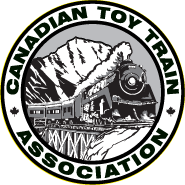African train journey
Zimbabwe – Victoria Falls to Bulawayo by train. Why ?
By Frank L. Schmidt
Originally published in the CTTA Canadian Flyer.
That is a very good question that you might ask yourself. Why would anyone take a normal passenger train in Zimbabwe (Zim)? The answer is the story of this article.
My wife and I decided to vacation in Southern Africa in 2014 and began the research and planning in the summer of 2013. It was decided to take five safari camps for wildlife and landscapes as well as experiencing local life in Namibia, Botswana, Zambia, Zimbabwe and South Africa. Along with this research came information about an interesting train journey in Zim travelling from Victoria Falls to Bulawayo.
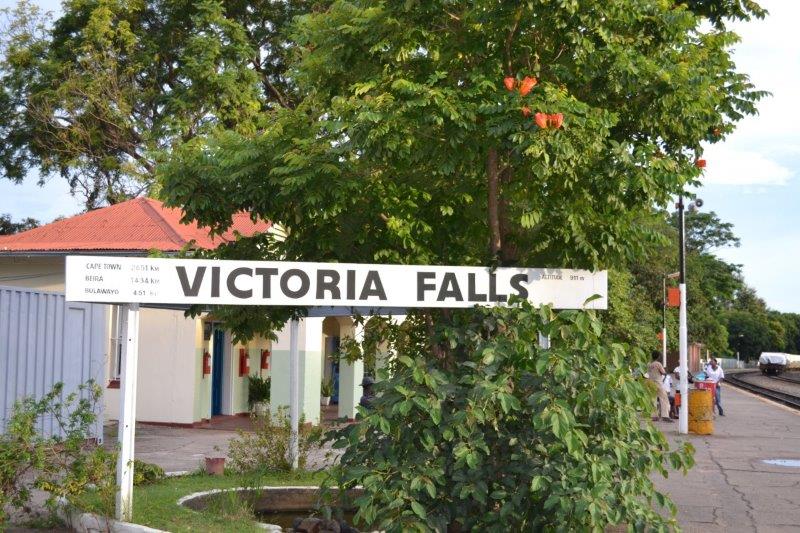
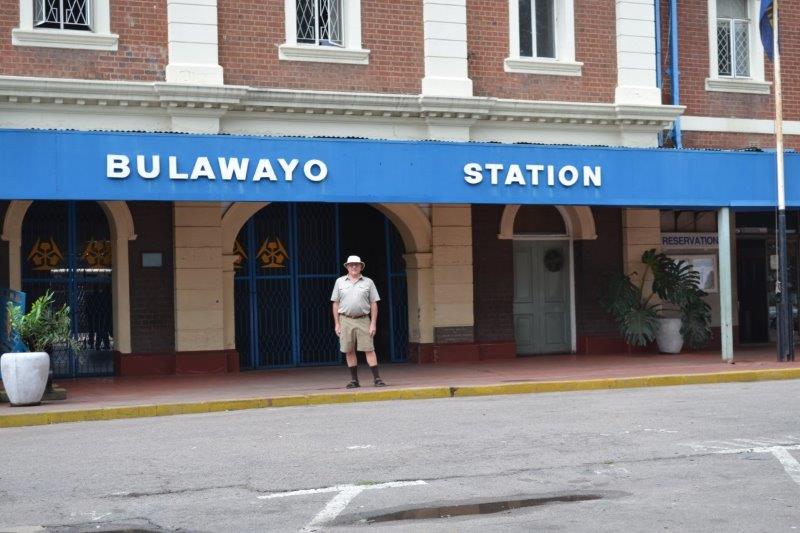
Who would want to travel independently in Zim, let alone on a local overnight train in one of the poorest countries in Southern Africa? This local overnight train featured original 1952 and 1958 British built passenger coaches supplied to the Rhodesian Railways of the time. From the Web site www.maninseat61.com, we learned that the price for the journey was very attractive at $12 US per person. Comments from past passengers sounded very encouraging, enjoyable and safe. This would be an adventure for sure and we prepared to make the most of it. Do not expect ‘white glove’ service; if you have low expectations then you will not be disappointed. The 472 km train journey was reported to be approximately 14 hours, just do not expect it to leave on time, arrive on time or both. This is not an express train but has many whistle stops along the way. As far as the amenities of lights, water or food on board, you will never get all three but should expect at least one of these. Tickets could only be purchased on the day of departure at Victoria Falls Station. We decided to take the train!
After our safari camp in Livingstone, Zambia, we crossed the 1904 built rail/road/foot bridge across the Zambezi to Zimbabwe to begin our last safari camp. After this camps conclusion, we were dropped off around 1:00 pm at the colonial Victoria Falls Hotel, also built around 1900 – 1904. This is a Colonial lady who looks very good for her age with a commanding view of the rail bridge and gorge from the Terrace.
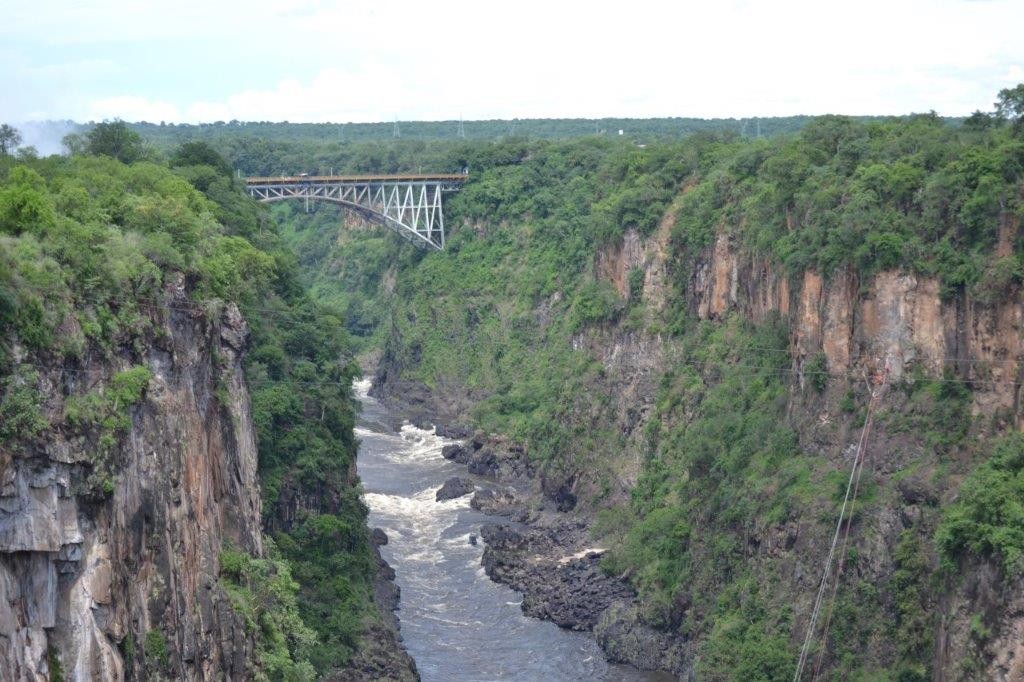
The Vic Falls train station is about 100 metres away from the hotel. We set off to book the train. Online we were advised to book the entire compartment for four as the cost was very reasonable and thus have two advantages – spacious and private as well as allowing the two of us to sleep on the lower and larger beds. This compartment would cost 4 x $12, however, the ticket agent asked if we were seniors and when we acknowledged this fact, he gave us the senior rate of $9. With the additional cost of bed linens at $4 each, our final cost for the journey was $44 US for the two of us. This was a terrific deal! The train was due to depart at 7:00pm and were told that the buffet car was attached on alternate days and would not be on the train today and were advised to purchase food and water for the journey. We returned to the hotel for Afternoon Tea on the Terrace. What a view of the bridge and gorge.
We returned to the station at 6:30 to prepare for our 7:00pm departure in 1st Class No. 1086 coach, compartment G. This was a luxury coach from 1952 built in Gloucester for Rhodesian Railways, with the old colours and decals but now sporting the NRZ – National Railways of Zimbabwe. The lights worked, the water didn’t, so we had one out of the three coach amenities.
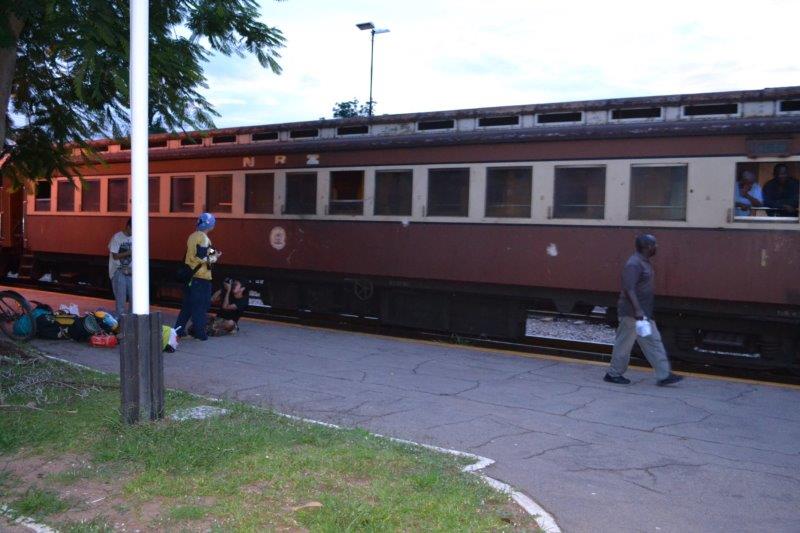
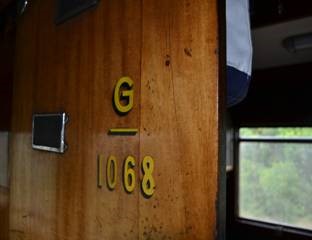
The train eventually left at 9:00pm and the steward prepared the lower berths.The compartment was nearly original, complete with green leather seating, pull down berths, interior mahogany/walnut wood trim, lights, washbasin, fold down windows with wood blinds and the 3 step fold down table. There were a few rough edges but still looking pretty good for its age and lack of maintenance. The sliding compartment door had the original working lock and a safety chain (much to my wife’s relief). The inside was not especially clean but we wiped things down with sanitizer wipes. Of the 4 nearby toilets, 2 on our car and 2 on the adjoining second class car, one was in a reasonable and usable condition.
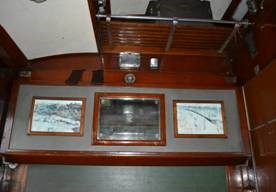
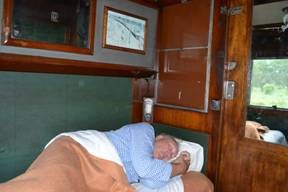
We settled down for a good night and were only interrupted a few times at the Hwange Colliery to attach 12 coal cars destined for the thermal generating station in Bulawayo. We had breakfast in our compartment around 7 am as we passed through the Hwange game reserve and looked out to view baboons, zebras, wildebeest and impala – a great wakeup call. It was interesting to see the many local people getting on and off the train at the various villages along the way, some picked up by donkey and cart while many others walked carrying their precious bundles on their heads. The closer we got to our destination of Bulawayo; we noticed better maize crops and local women selling cooked maize cobs to passengers at the various stops. I would have liked cleaner windows for our pictures but considering the situation, this was a minor inconvenience as we could open windows for a clear view/picture of the passing countryside.
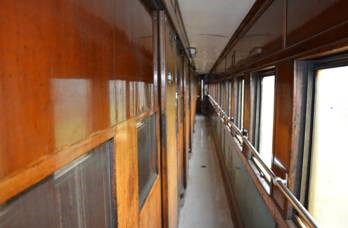
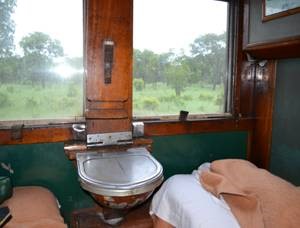
We eventually arrived in Bulawayo at 1:00pm after a sixteen hour journey, almost on time for Zim railways! It was a most worthwhile train journey and one that we will cherish and remember for a long time.
What is there to do in Bulawayo?
Bulawayo, Zimbabwe – The National Train Museum
When we were planning our Southern Africa vacation, a trip to see Victoria Falls was included. Why travel approximately 16000 miles from home and not see one of the great natural wonders of the world? From there followed the overnight train journey to Bulawayo. What is there to do in Bulawayo for a train enthusiast?
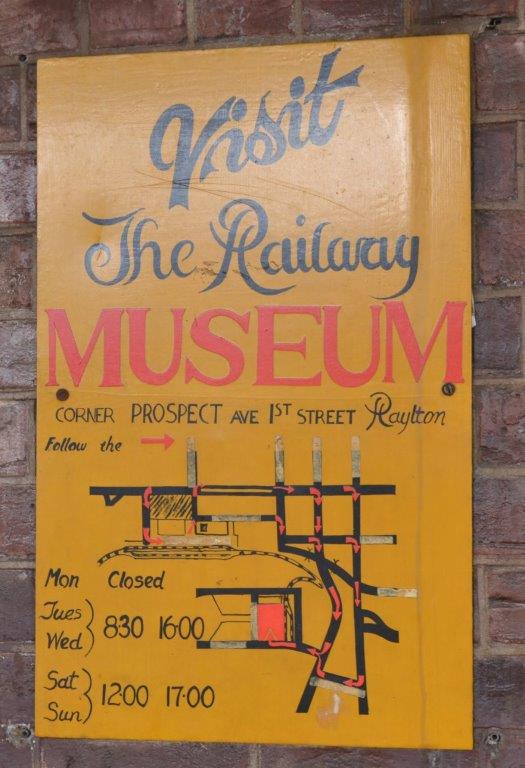
Bulawayo is home to about one million people, the second largest city in Zimbabwe but more importantly home to the ‘National Railways of Zimbabwe Museum’ formerly Rhodesian Railways. Zimbabwe was a former British colony known as Rhodesia as well as Southern Rhodesia. The railways were a means to develop the region and especially so when gold and diamonds were discovered in South Africa. To move goods to market an economical and fast route needed to be developed. Ox and wagon were the main means of transport so the building of the railways became an important link to export raw materials, move the region forward and promote the expansion of British Imperialism.
Cecil John Rhodes was the right person at the right time to promote all of these. Fabulously wealthy from South African gold and diamonds (senior partner at DeBeers), Rhodes pursued his vision of an African transcontinental railway, the Cape to Cairo railway. Initially the railways were built privately in small sections to service industry such as mining and forestry for commercial profit. It was no easy task building railways in Southern Africa where financing was required and dealing with wild animals and killing diseases were great obstacles.
The National Railways of Zimbabwe Museum is located in Bulawayo just behind the Bulawayo Station in the district of Raylton. The museum has vintage steam locomotives and rolling stock on display outdoors as well as engines, coaches and other railway memorabilia stored in 2 old railway sheds. The South African Railways were famous for 2 railroad initiatives, namely a particular type of locomotive – the Beyer Garatt locomotive – and 3 types of track gauges; the narrower gauge rail (2 foot centres), narrow gauge 3’6” and standard gauge all in the same system.
We took a taxi from our hotel to the museum and found the very friendly staff helpful in all respects. You could climb on any/all rail equipment, at your own risk of course, but great for photographs.
The museum has 3 of the Beyer Garatt locomotives in full original condition and about 3 more in a salvageable step. The ‘Jack Tar’ built in 1895 and the first loco to cross the Victoria Falls bridge is present along with approximately 7 other steam locomotives built from 1903 to 1954 and all British built. Saddle tank locomotives, steam locomotive with tender and Beyer Garatt are represented.
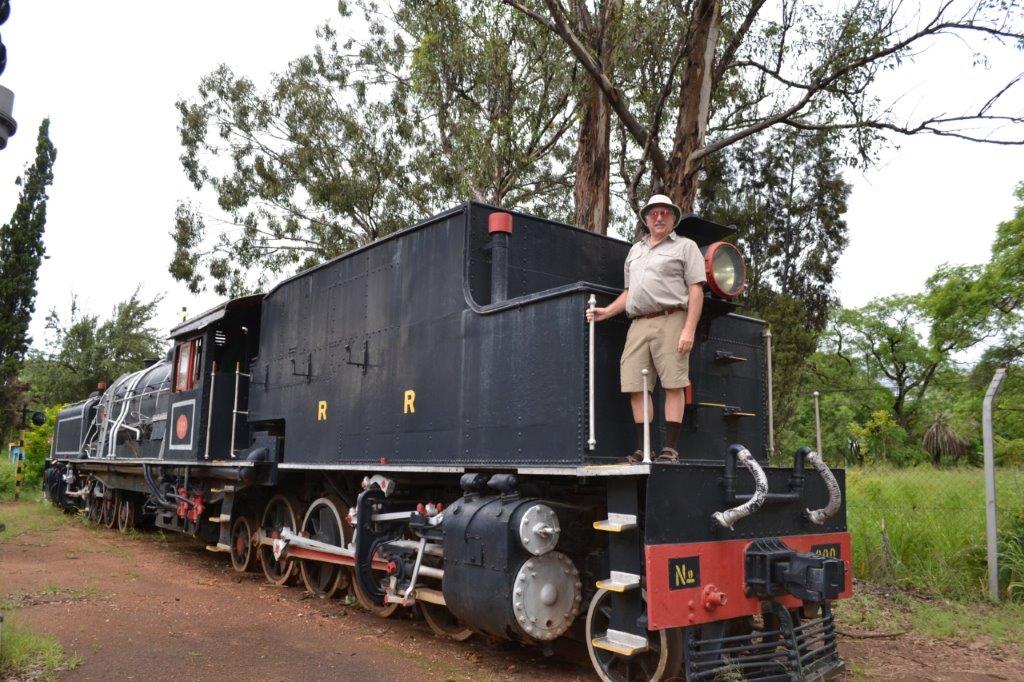
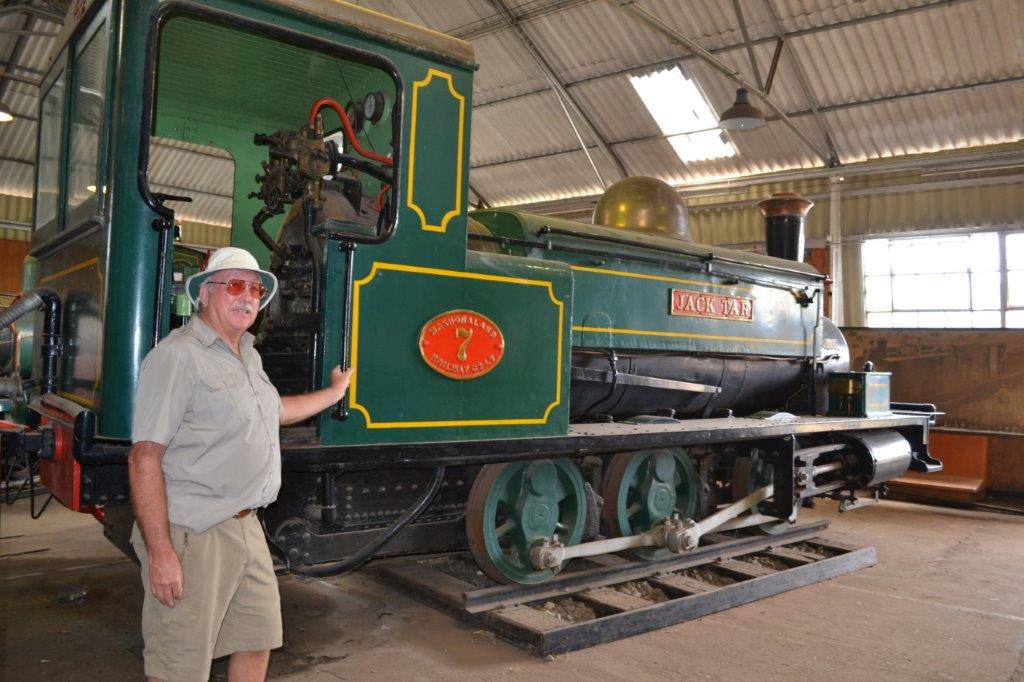
Inside our shed, is the gem of this museum – Cecil Rhodes’ personal sleeping coach, all in magnificent original condition. As we were looking at this locked car, the museum curator, Mr. Gordon Murray approached us and was delighted to share the history of the car. Gordon opened it up and gave us a conducted tour inside. This car was built by the Pullman Car Company, USA, in 1899 to a luxury standard costing 2800 pounds sterling. Built in Chicago, disassembled and shipped to Cape Town where it was reassembled for use. This was bought by the De Beers Company for Rhodes exclusive use, travelling on the rail lines in the Southern Africa region.
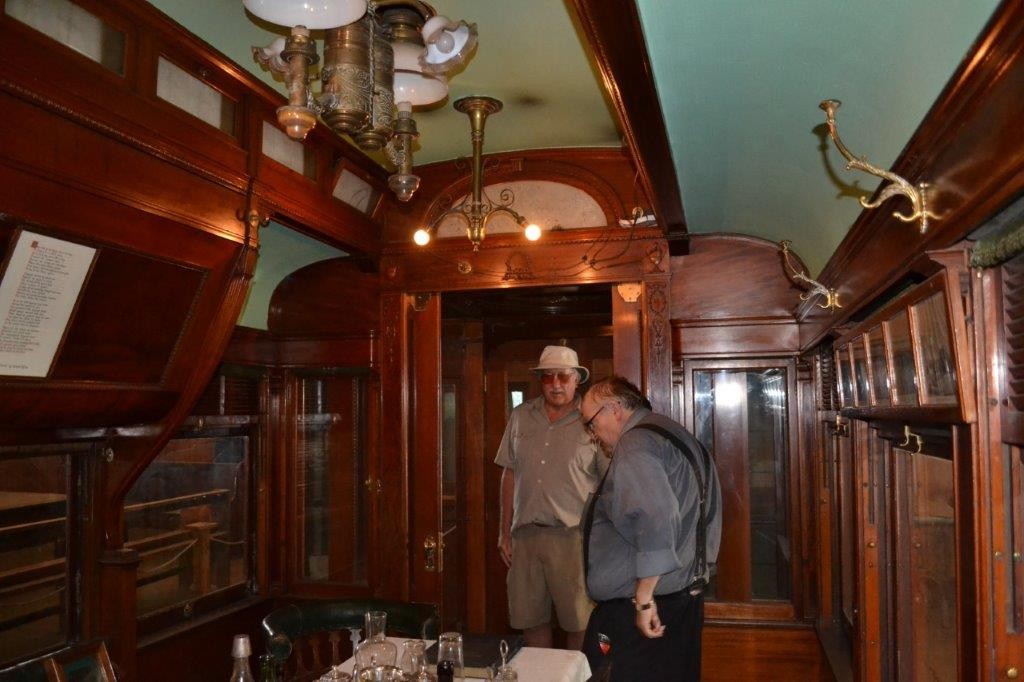
The coach has rich teak throughout with fine filigree carvings. The car comprises a dining lounge area at one end, bed and bathtub as well as 8 berths for guests and a separate cooking kitchen with cold box as well as sleeping quarters for the cook. This was a beautiful coach in great condition and the best part of the museum’s exhibits. Did I tell you the cost of admission? $1 US – a great deal!
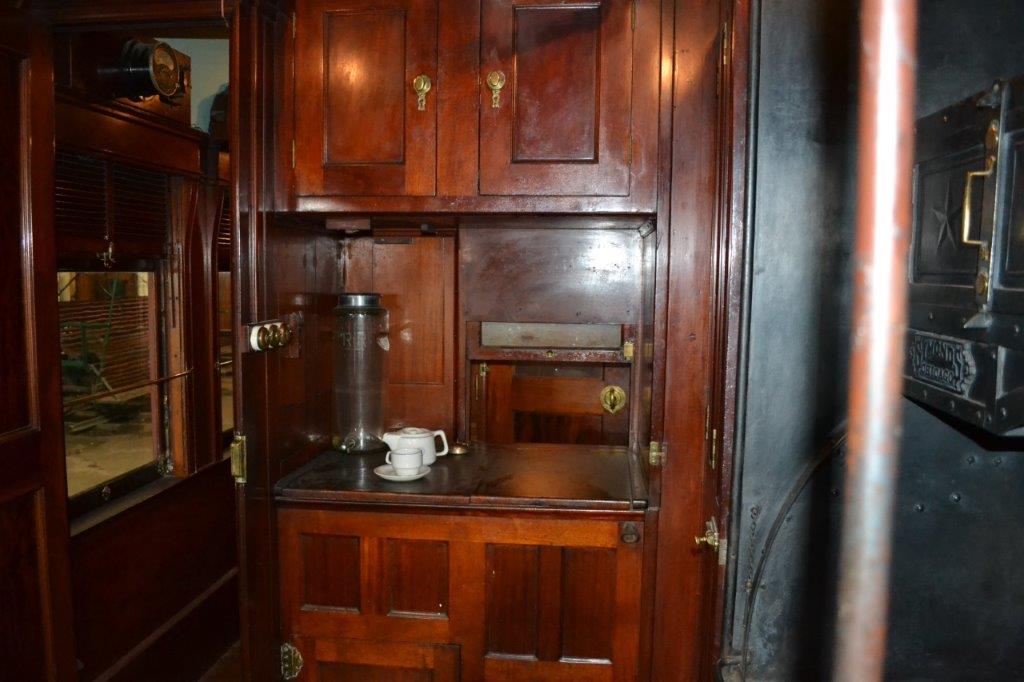
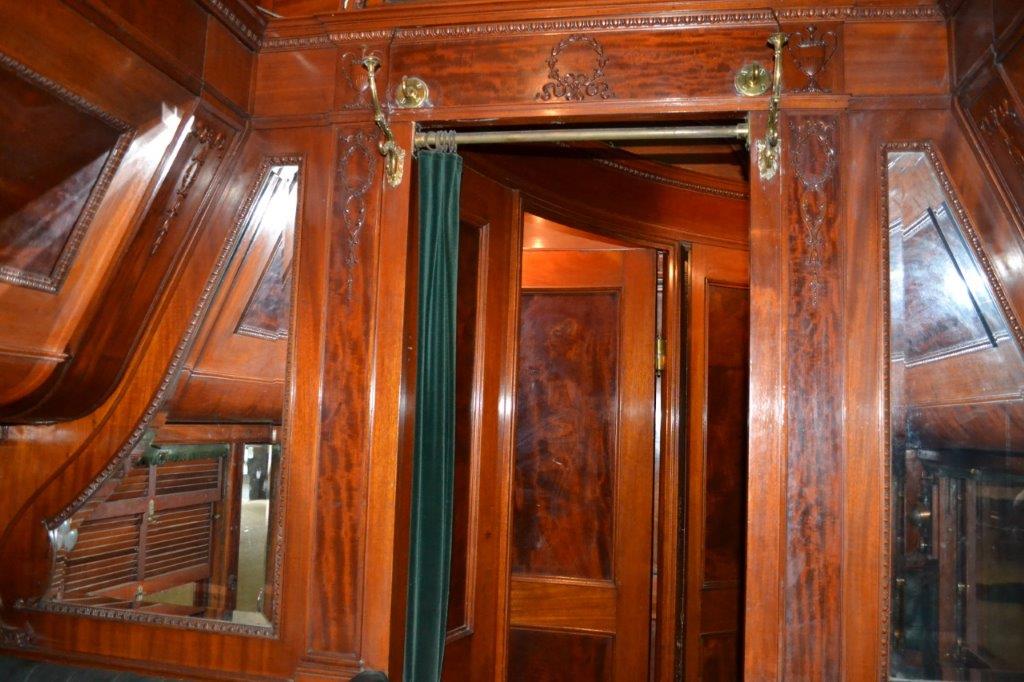
A booklet at the museum, titled “Iron Spine & Ribs” by Messers. Rod Burrett & Gordon Murray, is available and well worth purchasing. Many thanks to Gordon Murray for his assistance at the museum, particularly with the Rhodes coach.
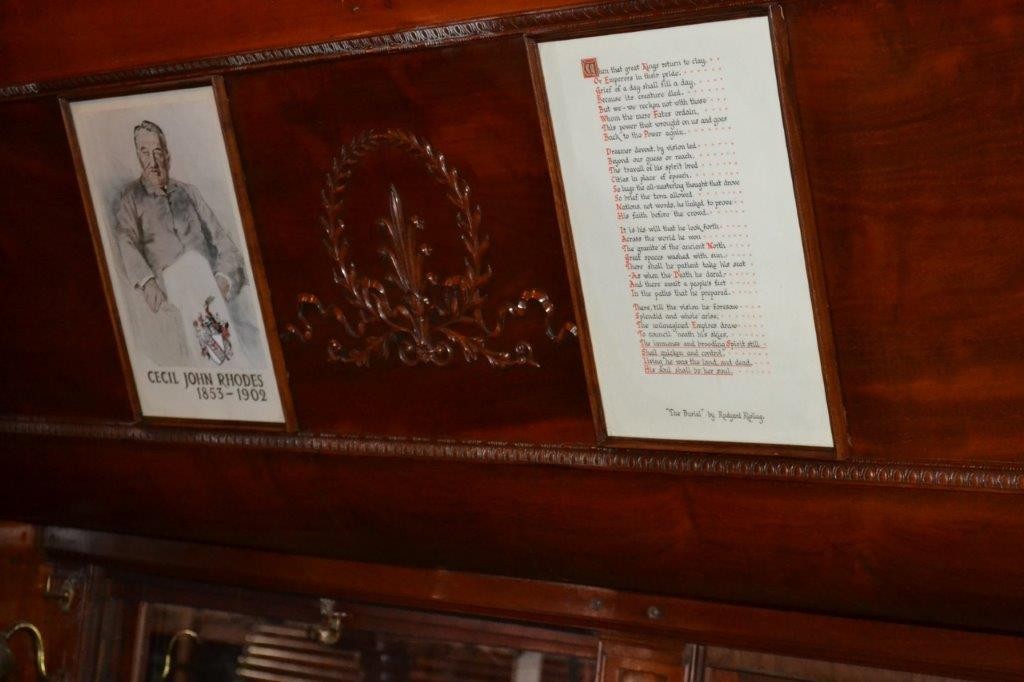
Thanks for coming along on our Journey! Frank and Annie Schmidt
About the Author
Frank Schmidt is a collector of American Flyer, Hornby, Marklin, some Marx, and Bing O gauge trains. He belongs to the CTTA, TCA and TCS train clubs and has published train articles in each of their periodicals.
He has recently co-authored a book “Canadian Pre-War Toy Trains – The Marketplace – 1912 -1938” with fellow enthusiast Charles Reif.
Frank says, “In our world travels, adventure holidays as we call them, we use public trains when possible to see the landscape instead of flying over it. These include riding the rails in Canada, China, India, Mongolia, Myanmar, USA, Egypt, Zimbabwe, South Africa and most of Europe. The interesting points are always the conversations with other travellers, and being aware of the different customs and cultures.”
“A recommendation before starting out is to always book ahead, reserve your seat at a small extra cost and use reference information on ‘The man in seat 61’ at www.seat61.com‘ to help plan your trips.”
